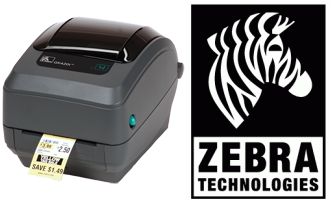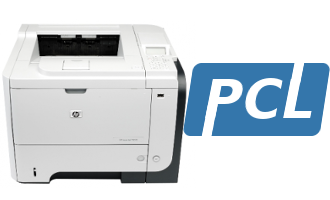Hi, I'm currently reworking this README file for better presentation.
Python PCL / ZPL allows you to control directly Zebra Printer & HP Printer with ZPL and HP PCL languages from Python script.
ZPL is a "tuned version" of PCL for Zebra label printer. Initially started for HP printers, this project evolved to support Zebra ZPL format. ZPL is now used every day with Zebra LP2824 Plus & Zebra GK420t at MC Hobby.
PCL stand for "Printer Command Line". Meaning that some printer behavior (font, font size, bold, graphics, barcode) can be controled by including some special command inside the text stream being printer. Those special commands are usually introduced by the escape character (ASCII #27). As a result, such printer command are also commonly named "Escape Sequence".
The advantage of PCL approach is to support advanced printer feature on:
- Archaic development plateform (eg: Clipper, Habour Projet)
- Operating Systems having few ressources (Raspberry Pi, MicroControleur, PyBoard)
- Exactly controling the whole printing process (no drivers stack, no printer spoeler). You can send bytes direcly to the printer? So you are pretty sure to be able to print something.
The inconvenient of such approach is that you have to take care yourself of the printing process, page layout, etc. No software in between (like cups or other document generator) means that you have to do it yourself!
The aim of this projet is to provide a starting point to print directly on PCL 'like' printers from Python scripts.
The goals are:
- Doing it with efficiency,
- Using few ressources (work on small system, old computer, possibly Raspberry-Pi),
- Supporting several communication layers
- serial/usb printer,
- CUPS raw / Windows Raw
- IP printers.
The projet will target:
- A4 Page printing with a networked HP 3015.
- Adhesive label/tag printing with Zebra
- Ticket printing with Epson (they support HP Pcl)
The most known printers are certainly the HP LaserJet. A wide range of HP Printer support for HP/PCL. We are currently using PCL it to print invoice from an 20 years clipper software still maintained nowadays (compiled with "Harbour project"). We are using a Networked HP3015 and this is working Pretty fine.
Zebra is also proposing PCL support (they call it ZPL for Zebra Programming Langage). The general principles stays identical. Zebra did also released many other PCL langages. I did place sereval links into the /res/ressources.txt
We bought an affordable Zebra LP 2824 Plus and we have tamed the beast by implementing ZPL in the library. Since, we are also using the library with Zebra GK420T.
Epson should also support similar feature but I will examine this point later (will Epson TM80 been a good choice?)
Brother has an affordable Brother ticket printer (QL-570) is not well supported on Linux machine. Controling that printer directly seems to be a nightmare (even with technical documentation). So this library will not manage the QL-570.
Please browse the content of test sub-folder, it contains many examples + image
capture to get started with the code.
To print on a Network printer, you must use a PrinterSocketAdapter class which
abstract communication over the an Ethernet Network.
When creating such PrinterSocketAdapter adapter, you must give a tuple of ('Printer_IP_adress', Printer_port ) .
On HP Network printer, the usual printer port is 9100.
Example: medium = PrinterSocketAdapter( ('192.168.1.206', 9100) )
You can also connect an USB printer. In most of the time, such printer will be taken in charge by CUPS on Linux machine.
Such USB printer uses the PrinterSerialAdapter class with abstract communication over a serial device.
To identify such file:
- Open a terminal.
- Connect the printer.
- type de command
dmesg | tailthis will show debug message were it will be possible to identify the device path.
example of log:
[102813.855412] usb 2-1.3: new full-speed USB device number 16 using ehci-pci
[102813.949086] usb 2-1.3: New USB device found, idVendor=0a5f, idProduct=00a3
[102813.949094] usb 2-1.3: New USB device strings: Mfr=1, Product=2, SerialNumber=3
[102813.949100] usb 2-1.3: Product: ZTC LP 2824 Plus
[102813.949105] usb 2-1.3: Manufacturer: Zebra Technologies
[102813.949110] usb 2-1.3: SerialNumber: 36J141701319
[102814.002703] usblp 2-1.3:1.0: usblp0: USB Bidirectional printer dev 16 if 0 alt 0 proto 2 vid 0x0A5F pid 0x00A3
[102814.002745] usbcore: registered new interface driver usblp
Note: The printer can also be found by exploring /dev/usb/ .
In the present usecase, the printer has been located at /dev/usb/lp0 .
When creating such PrinterSerialAdapter adapter, you must give 2 parameters: the Printer_device and Printer_Baud .
Example: medium = PrinterSerialAdapter( '/dev/usb/lp0', 9600 )
Warning ! On some operating systems, the printer will be managed by a print spooler (like CUPS).
In such case, the USB device cannot be open directly (because owned by CUPS).
In such case, you will have to use a PrinterCupsAdapter instead of PrinterSerialAdapter !
If you wire a Zebra on Linux Mint, CUPS will take the printer in charge!
Depending on the Operating System, Linux Version and printer, the USB printer may be taken in charge by a print spooler. The printer is managed (usually by CUPS).
In such case, the python Script cannot access the USB port with a PrinterSerialAdapter class!
Instead, you will have to install the printer as a RAW DEVICE (see ressource) and use
the class PrinterCupsAdapter to send the PCL command through CUPS.
example of log:
[102813.855412] usb 2-1.3: new full-speed USB device number 16 using ehci-pci
[102813.949086] usb 2-1.3: New USB device found, idVendor=0a5f, idProduct=00a3
[102813.949094] usb 2-1.3: New USB device strings: Mfr=1, Product=2, SerialNumber=3
[102813.949100] usb 2-1.3: Product: ZTC LP 2824 Plus
[102813.949105] usb 2-1.3: Manufacturer: Zebra Technologies
[102813.949110] usb 2-1.3: SerialNumber: 36J141701319
[102814.002703] usblp 2-1.3:1.0: usblp0: USB Bidirectional printer dev 16 if 0 alt 0 proto 2 vid 0x0A5F pid 0x00A3
[102814.002745] usbcore: registered new interface driver usblp
If you pay attention to the log here upper (already showned for USB devices), the usbcore did register a new interface driver
named usblp (so lp is the software to use for print files).
We known then that the printer will be taken in charge by CUPS.
Such managed USB printer uses the PrinterCupsAdapter class with abstract communication over a CUPS printer.
When creating such PrinterCupsAdapter adapter, you must give the CUPS queue name to access the printer .
Example: medium = PrinterCupsAdapter( printer_queue_name = 'zebra-raw' )
If you want to send command (like ZPL to a Zebra printer) it is very important to install such printer as a RAW printer.
The needed steps and testing have been described in the following files
- /test/test-printer/zebra/demo*.* files
We strongly recommand to read the following files
- /test/test-printer/zebra/demo-README.txt
- /test/test-printer/zebra/demo.zpl
- /test/test-printer/zebra/demo-zebra-raw-queue-cups.pdf
The last file demo-zebra-raw-queue-cups.pdf is in french but you should be able
to easily identify the various screen of Raw Queue installation for a the Zebra USB printer.
This is described in our article "Imprimante Zebra USB en réseau avec CUPS sur Raspberry-Pi" (french)


